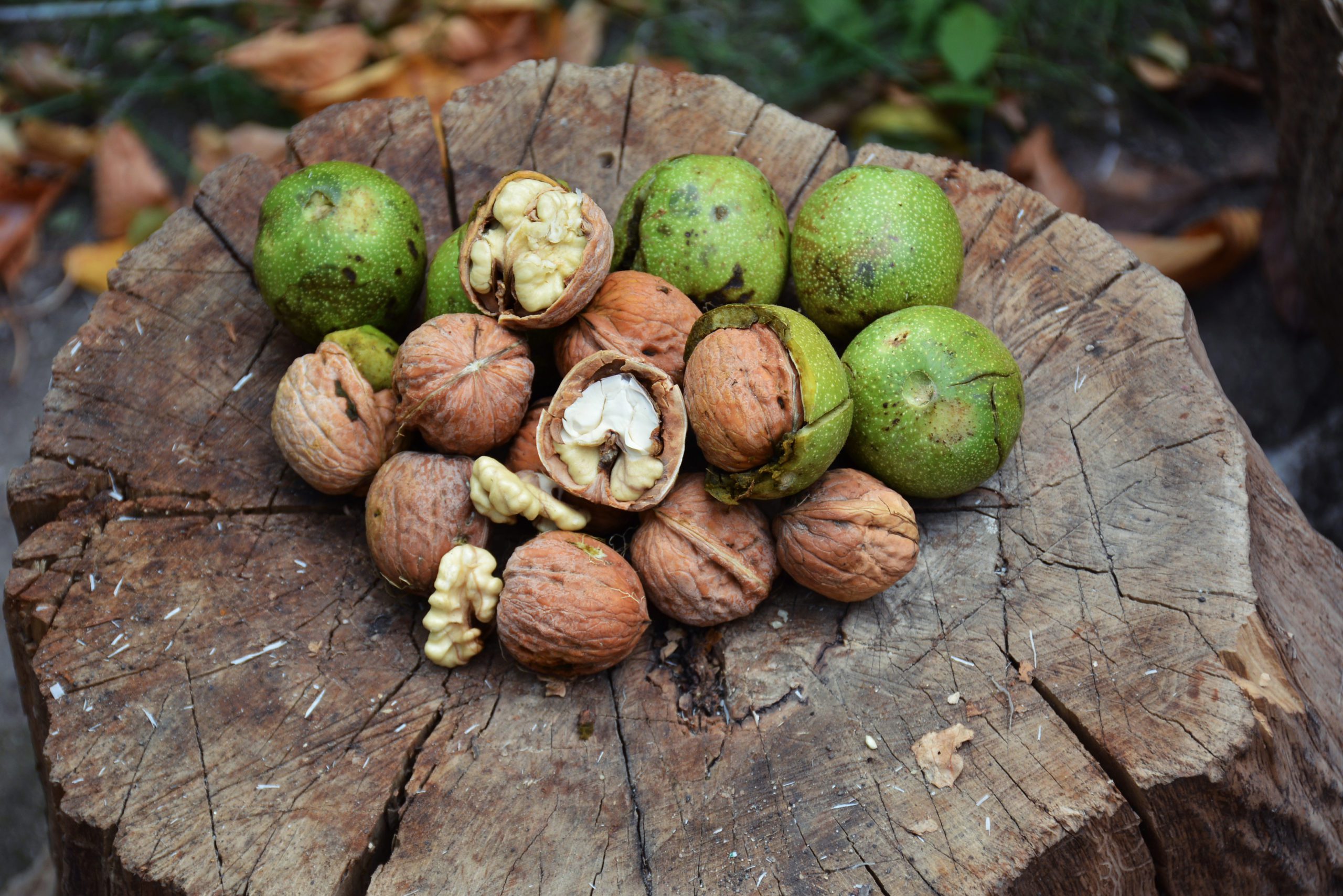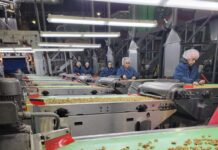Quality organically grown walnuts are not produced with neglect but with careful planning and management.
Rachel Elkins, UCCE pomology advisor for Lake and Mendocino Counties, where a large percentage of California’s organically grown walnuts are produced, said “growers need to farm their trees”, understand the need for long term planning for successful organic walnut production and to communicate with their certifier.
Costs for inputs in organic walnut production, Elkins added, may be higher than in conventional production, but the market has been stable, allowing production to continue. Planting the Chandler variety has been another positive aspect of the organic market in high elevation Lake County Elkins said, due to its lateral bearing, good quality, and late spring leafout, which limits exposure to walnut blight and early season insect pests. Production costs and returns are optimal were pest management inputs are minimized.
That is not to say there are no big challenges. Drought and flooding can adversely affect production and orchard floor management- one of the keys to organic walnut production.
Statistics for organic walnut production are hard to find, Elkins said, but as of 2018, she said Lake County leads with about 1,700 acres. San Luis Obispo County has 650 acres, San Benito has 564 acres and the Solano/Yolo counties combined has about 2,000 acres.
Harvesting a quality crop will require a farm plan- or organic systems plan. The plan shows material needs and products anticipated for an organic orchard. A certifier must approve of the plan and the certifier can approve materials regardless of whether they are listed with the non-profit Organic Materials Review Institute (OMRI) or the Washington State Department of Agriculture (WSDA), Elkins said. Products must be registered for use in California and importing countries may have different rules for organic, for example Maximum Residue Levels.
Domestic rules can be found at the USDA National Organic Program (NOP), CDFA’s organic program and also at the county level with the county agricultural commissioner’s office which handles and enforces the CDFA program.
The original basic list of USDA/NOP can be found at http://www.ams.usda.gov/rules-regulations/organic/national-list. It allows use of all natural substances unless specifically prohibited. Inert ingredients in a product may be problematic. The EPA List 1 has known toxicological concerns. List 2 are potentially toxic. List 3 are unknown toxicity except passive pheromone dispensers. List 4A are minimal risks and list 4B is reasonable to conclude no adverse effect on health or environment.
The NOP and EPA come together in OMRI and WSDA or as determined by individual certifiers. Registrants of products for organic production pay a fee and the products are evaluated. There is a decision made to list or not list and recommend to certifiers.
Certifiers, Elkins said, are important partners in implementation of an organic systems plan (OSP). Growers should know which lists they use and if they self-evaluate materials. How quickly do they inform you when the status of a material in your farm plan changes?, she asked. Certifiers may warn organic producers that they cannot use any input material in their organic production system until it has been listed by OMRI, WSDA and added to your OSP and been approved for use.
Certifiers are not pest control advisers, Elkins stressed. PCAs recommend a material, certifiers approve. Communication between all parties is essential.
Moving into orchard practices, Elkins said that both the orchard site and the cultivar must be chosen carefully to minimize risks. Habitat in and around the orchard should be managed to control pests. Cultural practices should be timed to be more effective. Communicating with other organic producers and making use of education opportunities is also important.
Elkins suggested that due to young trees’ susceptibility to pest and pathogen pressure, providing protection with conventional methods and materials and before transitioning to organic production should be considered if possible within the total farming system (this may be impossible if land is already certified or for replant situations).
Giving young trees protection from sunburn, weed and vertebrate pressure will allow them to more quickly reach their growth potential and be more productive over their life span. Pre-plant preparation, nutrition, weed control, sunburn protection and vertebrate control done with conventional materials (where possible) can ensure better long term tree health and quality production.
As transition of an orchard into organic production begins, Elkins noted the importance of communicating with not only your certifier, but also buyers, about which materials to use. Phytotoxicity and food safety regulations must be considered with all products.
Buffer zones around organic production are another consideration. The zones are not just a number, Elkins said. They must be sufficient in size or have other features like a windbreak or diversion ditch to prevent the possibility of unintended contact by prohibited substances applied to adjacent land areas to lands with certified organic operations.
Soil building inputs are key to tree and soil health, but raw manure, sewage sludge and synthetically fortified compost starters are prohibited. The materials used cannot contaminate crops, soil or water with plant nutrients, pathogenic organisms, heavy metals or prohibited substance residues.
Compost in organic production orchards is encouraged, but if manure based must be produced according to NOP regulations in order to be considered compost. Plant based compost is considered to be mulch and not subject to restrictions on use or production.
Elkins’ general nutrition suggestions include not skimping on nitrogen- the biggest deficiency seen for growth and yield, but an expensive input in organic production. Micronutrients are also important especially zinc. Salts can also build up in drought conditions. Compost is a soil amendment and growers are encouraged to start with heavy applications then reduce amounts to maintain. Products that contain nitrogen include alfalfa/poultry manure pellets, well- composted manures and feather meal. Checking with your certifier prior to purchase is advised.
Cover crops can improve soil structure, but they also compete with young trees for water and nutrients, Elkins said.
Mined fertilizer materials are another source of nutrition, but they must not have undergone change in molecular structure through heating or combining with molecular substances.
Elkins said walnut husk fly is the biggest insect pest challenge in Lake County organic production. There are allowable insect controls, but none have a long residual.
The UC Davis IPM web site has guidelines for use of certified organic products that include oils, biologicals, soaps and Bt. Codling moth control (not an issue for Lake County walnuts) includes oils which will kill 30-40 percent of eggs, but phytotoxicity is a concern, especially during hot weather. Maintaining habitat for beneficials and predator insects is also advised. Walnut blight is controlled by copper in Lake County but the biggest disease challenge for valley orchards, Elkins said, are fungal diseases including BOT.
Allowable ground squirrel control includes Vitamin D3, repellant products, mechanical traps without baits, ammonium soaps and birds of prey. Baited traps may be placed outside the orchard, with appropriate buffers.
Weed control in organic production can include biological: arthropods or pathogens; biological pesticides, non-synthetic herbicides, mulches, pesticidal soaps, acetic acid and fatty acid herbicides.
There is no registered ethylene product to promote maturity. Sunburn protection can be milk protein paint or kaolin-based paint.
Butte County organic walnut grower Ryan Fillmore outlined some of his efforts in orchard weed control. The four choices available: animal, heat, mechanical and chemical, all have some advantages and disadvantages.
Animal control may be ecologically friends, but food safety guidelines strongly discourage bringing livestock into an orchard. Heat, or flaming weeds prevents growth and can be used on berms and floors, but efficacy depends on weed variety and age. It can also be dangerous in dry conditions. Using approved chemical control will burn down weeds, but is not a pre-emergent. Cost can also be a limiting factor.
Tilling or mowing weeds in orchards is useful in flood or solid set irrigation systems, but is a challenge for orchards irrigated with drip or micro sprinkler systems. This method can produce a clean orchard floor for harvest, but comes with a labor and energy cost. Elkins said that Lake County growers often suspend irrigation line from trees to allow in-row weed mowing or cultivation.
Weed control in organic production is possible, Fillmore said, but is more difficult and expensive. Mowing or tilling provide control, but timing can make a big difference with harvest difficulty or ease.












